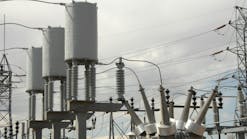NREL: National Transmission Planning Study Researchers Approach MSOC Team to Create Nodal Representation of the U.S. Transmission System
Researchers for the National Transmission Planning Study (NTP Study) approached the Modeling, Simulation, and Optimization Capability (MSOC) team, a part of the Computational Science Center, within the National Renewable Energy Laboratory’s (NREL) Energy Systems Integration Facility, to create a nodal representation of the U.S. transmission system with 95,000 buses and 130,000 transmission lines.
The MSOC team works with the Grid Planning and Analysis Center (GPAC) and researchers across NREL on grid modernization, energy systems integration, and mobility electrification projects.
The existing software for modeling the transmission system is not capable to scale and support the size of the analysis envisioned in the study, which requires to model the entire U.S. for every node and hour of the year and use that data to link with other modeling frameworks.
The NTP Study is led by the U.S. Department of Energy's Grid Deployment Office and conducted in partnership with NREL and the Pacific Northwest National Laboratory. The study required robust calculations and modeling of transmission constraints to provide transmission beneficial for electricity customers nationwide, informing transmission planning processes, and identifying strategies to accelerate decarbonization while maintaining system reliability.
"We looked at the software and knew we could help the NTP Study with more efficient processes, and we had a talented postdoctoral researcher, Alessandro Castelli, who could help,” said Jose Daniel Lara, a GPAC researcher, the lead developer of NREL's Sienna framework. "We collaborated with scientists in GPAC and implemented new software to calculate the power flow sensitivity matrix—which describes how line flows change when load or generation changes—up to 20 times faster while using five times less memory on large-scale instances."
The improvements were integrated into a software package, PowerNetworkMatrices, which is part of the Sienna modeling ecosystem. The software directly calculates a specific section instead of calculating an entire matrix to pick out a small section.
The approach is more efficient, helping reduce computational bottlenecks. The MSOC team plans to continue collaborating on the NTP Study to make more computational improvements to project workflows.
MSOC wanted to help researchers run simulations without simplifying them. MSOC's work enabled the optimization model answerable for the NTP Study team to focus on the experiments to be conducted.
"With the technical challenges solved through this NREL collaboration, the NTP Study can more effectively highlight transmission options that benefit customers and inform transmission planning throughout the country," Lara added.
The NTP Study and its key findings will be released by the end of 2024.


